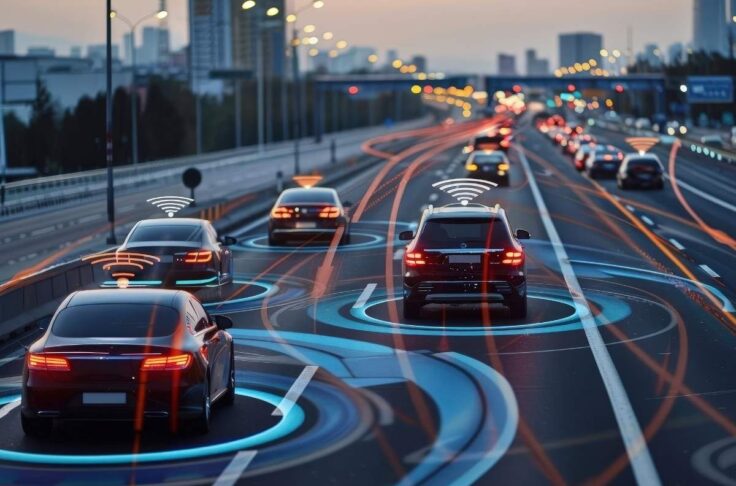5 Ways Shared Mobility will be Different in 2019
Summary
In 2019, we will see shared mobility continue to grow. More importantly, it will be better accepted and integrated into cities, but at the same time, cities will expect more data from operators. Shared mobility operations will expand in size and scope, offering more than one type of service. People may start seeing more curb space allocated to shared mobility, facilitating the first-last mile gap.

This past year has been an exciting one in the shared mobility space, with new forms of mobility popping up across the globe, carsharing giants merging, and a rapid application of new technology. While shared mobility is no longer a new concept, many cities are still behind in their regulations and many communities are still facing mobility shortages.
In 2019, we expect shared mobility to further embed itself into people’s day-to-day lives. With convenience growing through mobility-as-a-service apps and the rising cost of vehicle ownership, it will become more obvious why shared mobility needs to be integrated better into cities. In addition, we see 5 key changes on how shared mobility will be different, and better, in 2019.
1. Growing Acceptance
As one may expect, shared mobility is predicted to grow 16% year over year (FutureBridge). With the expansion of services such as carsharing, peer-to-peer, and scooter sharing, there are more and more alternatives to private vehicles. In Asia, carsharing membership increased by 400% from 2014 to 2016 (movmi), peer-to-peer carsharing fleet size has grown 80% in North America (Transportation Sustainability Research Center), and scooter sharing is in almost 4 times the number of cities since 2015 (Innovation Centre for Mobility and Societal Change).
Case studies around the world prove adoption of new mobility is increasing. An often-referenced city is Vancouver, considered the carsharing capital of North America. With over 3,000 shared vehicles among four operators (CBC), growing public transit demand, station-based bikesharing in the city and free floating bikesharing starting in a nearby municipality, it is evident that people are looking for more ways to get around.
Similarly, as the world’s second congested city, Moscow is leveraging shared mobility to address this unfortunate title. There are currently 14 carsharing operators in Moscow, with over 25,000 trips per day (Fleet Europe), and the city recently launched its first kick scooter sharing service (Moscow Mayor). On the mobility as a service side, Moscow facilitates access to a bikesharing service with its public transportation payment card (movmi).
2. Data Sharing
As more new mobility services become available in a city, the impact of these options begin having a larger influence on how cities are structured. With carsharing, ride-hailing, and scooter sharing changing the way people move around, cities need to understand how this is reshaping the city, and how to effectively adapt to these changes.
Across the globe, cities are requesting data from shared mobility services. While issues of data anonymization and intellectual property need to be determined, shared mobility services and cities need to work in collaboration to bring new mobility to the next level (Forbes). With transparency into shared mobility data, cities can determine how these services impact congestion, parking, and behaviour.
Operators may view data sharing as additional workload, but in fact, it provides a win-win situation. With a comprehensive understanding of usage patterns, cities can build out data-driven policies and regulations that would facilitate the growth of shared mobility services (Forbes). By tying usage data with other city-collected data, there is also the potential to maximize the benefits of shared mobility and identify other opportunities, such as offering a neighbourhood-focused carsharing system, strategically placing scooters in dense areas, and incentivizing more ride-pooling services (Deloitte Insights).
3. Service Complexities
In urban settings, it is not surprising to find a handful of shared mobility services for people to choose from. With so many options available, mobility as a service will evolve into an intermediary platform that intelligently determines what option is best for a given trip. Trips will shift from being one mode to multi-modal, in order to leverage the benefits of each mobility option (Deloitte Insights).
At the same time, operators are trying to earn a larger piece of the shared mobility pie. Daimler and BMW realized they needed to join forces to compete with alternative transportation options, Uber realized ride-hailing may not be the most effective for shorter trips so acquired JUMP, and new player Lime who is seeing growth in scooter sharing decided to launch neighbourhood electric vehicles to fill another gap in people’s daily commute.
Similarly, we can expect to see more service offerings from individual shared mobility operators. Just like Lime expanded from kick scooters to vehicles, it wouldn’t be surprising for scooter sharing services to offer station-based carsharing or for free floating carsharing to offer kick scooters. In order to ensure the same level of customer experience can scale across different services, it is important the right technology is used for a seamless transition If one platform can integrate multiple shared mobility solutions from a single operator, then that would be even better.
Shared mobility also needs to work with public transit, which is proven to be the most effective way to move large amounts of people along a given path. By offering the first-last mile solution to public transit, shared mobility is what will help shift commuting behaviour away from private vehicles (Deloitte Insights).
4. Shared Mobility Hubs
When it comes to urban planning, there are numerous ways cities can be better built to accommodate for shared mobility services. The use of a street should be shared equally between different modes of transportation, from wider sidewalks to shared lanes for bicycles and kick scooters.
Another way to adapt cities for this new form of mobility is with shared hubs. Similar to central bus stations with many busses leaving different platforms, these shared mobility hubs will be a place to make accessing different modes of transportation more easy (San Diego Forward). Cities need to consider shared mobility hubs as a way to bridge the transportation gaps that currently exist. By piecing together different mobility options and making multi-modal trips easier, cities will see a more effective use of public space.
With these shared mobility hubs, it will be hard for people to argue that taking public transit is not convenient. Docked bikeshares and electric-powered station-based carsharing services would be available for those who may be running an errand in the neighbourhood and will need to commute back later, and curb space would be set aside for ride-hailing, microtransit, and in the future on-demand autonomous shuttles for those who need another mode for the last leg of their journey. Accessible space would also be set aside for dockless kick scooters, e-scooters, and bikes for shorter destinations.
5. Innovation for Differentiation
Shared mobility is inherently innovative – getting people to share vehicles and making the most of excess capacity with technology, an explanation logically explained by Zipcar founder Robin Chase in her book Peers Inc. While shared mobility has evolved into a viable alternative to private vehicles, and continues to grow globally, there are still many questions to be asked.
- What is the saturation point for shared mobility? Is it operating model dependent?
- How does the local mobility culture influence what services are offered, and by whom?
- What is the low hanging fruit for cities to be more shared mobility friendly (so that operators would want to grow into those markets?)
These are questions that will further shape the future of mobility. It highlights the possibilities that are still available with shared mobility, and that cities globally continue to have room to adopt this changing space. We are excited to be a part of this movement, and welcome further discussions on how we can help you get started in new mobility.


